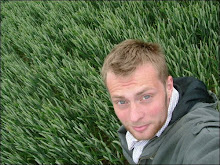Find the latest on Paint the Town REaD at www.paintthetownread.info
Dr. Matt Finch's new website is at booksadventures.wordpress.com
‘I hope you’re reading to the baby, Mum, ‘cause I don’t want a dumb sister’
Dr. Matt Finch's new website is at booksadventures.wordpress.com
‘I hope you’re reading to the baby, Mum, ‘cause I don’t want a dumb sister’
When a child in a New South Wales kindergarten met his newborn sister for the first time, he knew just what advice to give his mother.
The young boy wasn’t even in primary school yet, but he had been brought up to value literacy thanks to ‘Paint the Town Read’ (PTTR), an Australian campaign to raise awareness of children’s need for a language-rich environment right from birth.
It seems that no-one does ‘Books and Adventures’ quite like Australians. We’re back down under on the blog this week to talk with Rhonda Brain, a former headteacher from New South Wales who has seen the PTTR scheme, which she devised, take her homeland by storm.
Teaching in Parkes, New South Wales, Rhonda and her team realised that there were a growing number of children coming to kindergarten with delayed language development. Rhonda decided to target every new parent right at source – in the maternity ward!
She continues the story: “I wrote to every school and pre-school in Parkes, asking them to donate an agreed amount to purchase books for every new born, with a message in it from the schools ...and later from the Shire Library.”
Government funding allowed Rhonda to think even bigger. She recruited a team of movers and shakers in childcare and literacy, including teachers, maternity nurses, and the local speech pathologist. With a motto of “We don't want your money but we do want your co-operation!”, the team quickly secured the support of the mayor and other town leaders.
Rhonda explains: “It is wonderful, the town really do have ownership of the scheme, even to the point of being annoyed when TV reports the latest person as coming up with this wonderful idea of reading to your children from a young age.
“We held our launch in August 1996, gave the first baby born after the launch many books and prepared for our first Reading Day, held in 1997. We had many out-of-town guests from educational institutions and from parliament. The mayor held a civic reception for them and our committee and principals. Special education expert Dr Loretta Gircelli spoke at our launch and at our first reading day.”
PTTR activities today fall into three categories: on-going, one-off and annual.
Communities involved in PTTR arrange for books to be given to every child throughout their early years. The first of these on-going gifts is given to every newborn baby by their maternity nurse, complete with a personal message, and is followed by age-appropriate PTTR-designed story booklets, given out at immunization days, antenatal bookings and high school events.
One-off events included the clever appropriation of Y2K media panic to create the Millennium Reading Bug in 2000. This mascot has become increasingly popular, even generating its own fun dance at school socials and PTTR events. (When the Reading Bug laid an egg in 2004, children were encouraged to visit it and read to it just as their parents read to them!).
Along with a human chain of readers stretching more than a kilometre down Parkes Main Street, a 12-hour overnight “readathon”, and other attention-grabbing activities, Rhonda’s team have worked hard to keep literacy in the spotlight across New South Wales. In 2005, a Reading Relay saw a book passed, like the Olympic torch, from town to town across over 60 communities and 5500 kilometres in just two weeks. The message to ‘Paint the Town Read’ travelled by hot air balloon, motorbike, fire engine and even on horseback in a striking celebration of the communities’ dedication to encouraging children’s literacy.
The highlight of the PTTR calendar is the Annual Community Reading Day. Now in its fourteenth year, this event sees schoolteachers rise early to literally ‘paint the town read’, decorating shopfronts and streets throughout the town. Pupils, teachers and local workers all dress up according to a theme, and storytelling events take place in the town’s stores before the local park plays host to a celebratory ceremony that has over 2000 people in attendance. Guest speakers have included sports personalities, writers, government ministers, and even the Governor General of Australia.
Next time on Books and Adventures we’ll follow Rhonda as she takes the message of Paint the Town Read to communities across Australia.
You'll find Part Two of this Interview here:
